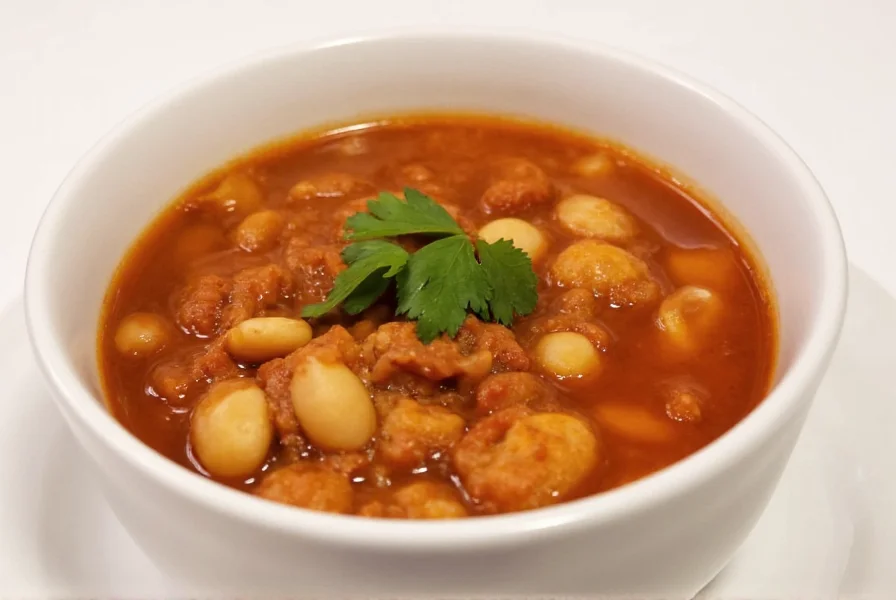White bean chili has gained popularity as a nutritious alternative to traditional beef chili, offering a lighter yet equally satisfying option for chili lovers. Unlike conventional chili recipes that rely on kidney beans and ground beef, this version features creamy white beans as the star ingredient, creating a distinctive flavor profile that's both comforting and sophisticated.
The Nutritional Advantages of White Bean Chili
One of the primary reasons home cooks and health enthusiasts favor white bean chili is its impressive nutritional profile. White beans serve as an excellent source of plant-based protein and dietary fiber while being naturally low in fat. When prepared with lean proteins like chicken breast or turkey, this chili becomes a balanced meal that supports various dietary goals.
Professional chefs appreciate how white bean chili maintains its texture during cooking better than many other bean varieties. The beans hold their shape while absorbing flavors from spices like cumin, smoked paprika, and garlic, creating a complex taste experience without excessive sodium or artificial ingredients.
Essential Ingredients for Authentic White Bean Chili
The foundation of exceptional white bean chili starts with quality ingredients. While regional variations exist, certain components remain consistent across most authentic recipes:
- White beans: Cannellini or Great Northern beans work best due to their creamy texture
- Protein source: Chicken thighs, turkey, or plant-based alternatives for vegetarian versions
- Aromatic base: Onion, garlic, celery, and bell peppers
- Flavor enhancers: Cumin, smoked paprika, oregano, and a touch of cayenne
- Liquid component: Low-sodium chicken or vegetable broth
- Acidity: Fresh lime juice or a splash of apple cider vinegar

Step-by-Step Cooking Instructions
Creating perfect white bean chili requires attention to cooking technique. Follow these professional tips for optimal results:
- Sauté aromatic vegetables in olive oil until translucent but not browned
- Add spices to the oil and vegetables, cooking for 1-2 minutes to release essential oils
- Stir in cooked protein and broth, bringing to a gentle simmer
- Add drained beans and simmer uncovered for 25-30 minutes
- Finish with fresh herbs and a splash of acidity
The key to developing deep flavor in white bean chili is patience during the simmering process. Rushing this step results in a one-dimensional taste profile. Allow the ingredients to meld together slowly over medium-low heat for at least 25 minutes to achieve restaurant-quality results.
Popular Variations for Different Dietary Preferences
White bean chili adapts beautifully to various dietary requirements without sacrificing flavor:
- Vegetarian white bean chili: Substitute vegetable broth and omit meat for a plant-powered version
- Slow cooker white bean chili: Combine all ingredients and cook on low for 6-8 hours
- Instant Pot white bean chili: Pressure cook for 10 minutes with natural release
- Smoky white bean chili: Add chipotle peppers in adobo sauce for depth
- Creamy white bean chili: Stir in a tablespoon of cream cheese at the end
| Nutritional Component | Per Serving (1.5 cups) | Daily Value % |
|---|---|---|
| Calories | 295 | 15% |
| Protein | 18g | 36% |
| Dietary Fiber | 10g | 40% |
| Iron | 3.5mg | 20% |
| Vitamin C | 25mg | 28% |
Serving Suggestions and Pairing Ideas
Elevate your white bean chili experience with these professional pairing recommendations:
- Top with fresh cilantro, diced avocado, or a dollop of Greek yogurt
- Serve with warm cornbread or crusty whole-grain bread
- Pair with a crisp green salad featuring citrus vinaigrette
- Complement with a light-bodied white wine like Pinot Grigio
- For meal prep, portion into individual containers with separate toppings

Troubleshooting Common White Bean Chili Issues
Even experienced cooks encounter challenges when preparing white bean chili. Here's how to address frequent problems:
- Too thin: Simmer uncovered for additional 10-15 minutes or mash some beans to thicken
- Too thick: Gradually add additional broth until desired consistency
- Lacking depth: Add a teaspoon of cocoa powder or coffee to enhance flavor complexity
- Beans too firm: Ensure proper soaking if using dried beans, or extend simmer time
- Overly spicy: Balance with a touch of honey or additional beans
Storage and Reheating Best Practices
White bean chili often tastes even better the next day as flavors continue to meld. For optimal storage:
- Cool completely before transferring to airtight containers
- Refrigerate for up to 5 days or freeze for up to 3 months
- When reheating, add a splash of broth to restore ideal consistency
- Avoid repeated freezing and thawing cycles
- For meal prep, portion into single servings before freezing
Frequently Asked Questions
Can I make white bean chili without meat?
Yes, you can easily create a delicious vegetarian white bean chili by using vegetable broth instead of chicken broth and omitting the meat. For added protein, consider including extra beans or plant-based meat alternatives. Many professional chefs recommend adding mushrooms to provide umami depth that mimics meat flavors.
How do I prevent white beans from becoming mushy in chili?
To maintain perfect bean texture, add canned beans during the last 20-25 minutes of cooking. If using dried beans, cook them separately until just tender before adding to the chili. Professional chefs often recommend slightly undercooking beans since they continue to soften in the residual heat after cooking.
What's the difference between white bean chili and traditional chili?
White bean chili typically features white beans like cannellini or Great Northern beans instead of kidney beans, uses chicken or turkey rather than beef, and has a lighter, more delicate flavor profile. Traditional chili often has a richer, deeper flavor from beef and dark beans, while white bean chili showcases brighter notes from ingredients like lime and fresh herbs. Both versions can be equally hearty and satisfying.
Can I freeze white bean chili successfully?
Yes, white bean chili freezes exceptionally well. Cool completely before transferring to freezer-safe containers, leaving about an inch of space for expansion. For best results, freeze without dairy toppings. When ready to eat, thaw overnight in the refrigerator and reheat gently on the stove, adding a splash of broth if needed to restore ideal consistency. Properly stored, it maintains quality for up to 3 months.
What are the best spices for enhancing white bean chili flavor?
The ideal spice blend for white bean chili includes cumin, smoked paprika, and oregano as foundational flavors. For complexity, add a pinch of cayenne for heat, a teaspoon of cocoa powder for depth, and finish with fresh lime juice. Professional chefs often recommend toasting whole spices before grinding them for maximum flavor extraction. Avoid overpowering the delicate bean flavor with too many competing spices.











 浙公网安备
33010002000092号
浙公网安备
33010002000092号 浙B2-20120091-4
浙B2-20120091-4